Language
You can read the magazine in one of the following languages
Geolocation
You can read the global content or the content from your region
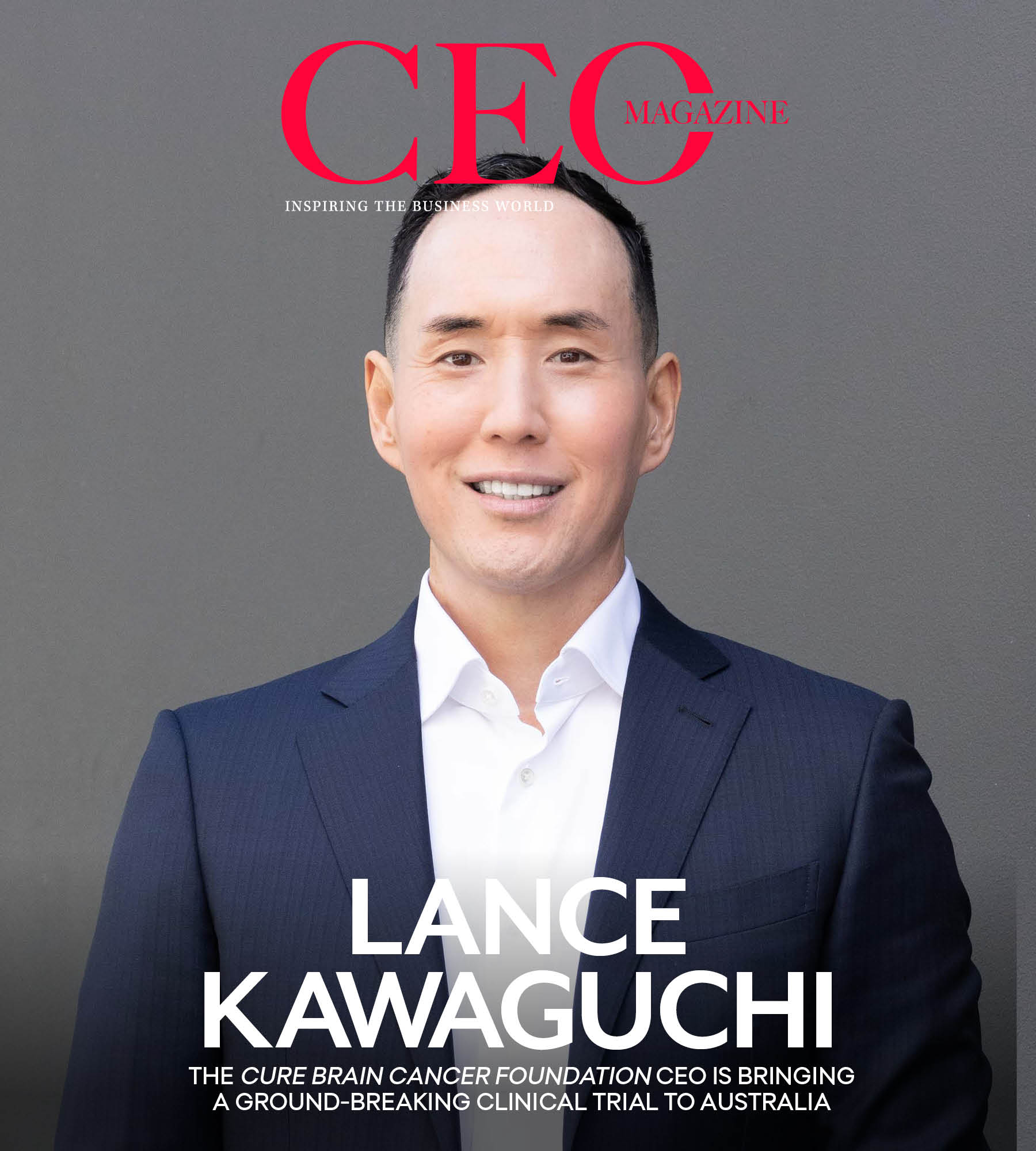
It’s been years in the making, but finally, there is a beacon of hope for Australians suffering from glioblastoma multiforme (GBM), one of the most aggressive forms of brain cancer.
This year marks the start of the GBM AGILE Trial in Australia, an innovative global platform that aims to improve outcomes for patients – a milestone made possible by the tireless efforts of the Cure Brain Cancer Foundation and its CEO, Lance Kawaguchi.
It’s a trial quite unlike others before it, Kawaguchi explains.
“It’s a global platform where information is assessed in real-time. They can do multiple trials at the same time to get information faster, resulting in the ability for quicker decision-making,” he tells The CEO Magazine.
“The benefit is that if something’s not working, you find out faster, but if something is working, you also find out faster.”
It’s a long-awaited development in the battle against this disease. While brain cancer has a five-year survival rate of 23 percent overall, only five percent of patients with GBM survive more than five years.

Until now, those diagnosed with the illness were forced to look toward the United States for treatment if they had the means. But those who couldn’t travel overseas faced limited options.
Now, around 50 patients per year will participate in the trial in Australia, with the Cure Brain Cancer Foundation supporting the program for the first three years.
The GBM AGILE program was first launched in the United States on November 13, 2015, at an event in Washington, DC. Attended by then-Vice President Joe Biden, it represented the start of a new chapter for the GBM community.
The Cure Brain Cancer Foundation was one of the original seed-funders of the innovative trial program, contributing around US$640,000 to its development back in 2013.
Assurances were made that the trial would be swiftly brought to Australia and anticipation started to build. But when the trial didn’t eventuate for a variety of reasons, including lack of funding, sufferers found themselves in a healthcare limbo, asking questions that were never answered.
What it really came down to was the financial viability of bringing the trial Australia, according to Kawaguchi. After all, for the big pharmaceutical companies on whose support such initiatives usually depend, such trials are a numbers game.
“They want to make sure once they get the intellectual property, once they get approval from the Food and Drug Administration, that they will have enough patients so that they can get a return on investment,” he expands.
“That’s one of the reasons behind the roadblock for brain cancer, the volume is very low. That’s one of the drivers causing no movement in 30 years.”
While other cancers have seen dramatic improvements in survival rates, brain cancer has lagged far behind, due to that lack of funding.

That was one of the main reasons for Kawaguchi to join the Cure Brain Cancer Foundation in 2021, leaving behind a high-powered career in investment banking that spanned 26 years and fulfilling a promise to his late mother in the process.
“What most people don’t realize is that this is the number one killer of children and people under 40 in Australia, but it’s also the most underfunded,” he says.
Indeed, for the trial to become a reality, the Cure Brain Cancer Foundation had to self-fund the project – to the tune of approximately US$5.1 million.
Initially expected to cost around US$7.7 million, the trial was originally to be co-funded by several parties. But Kawaguchi negotiated directly with the Global Coalition for Adaptive Research (GCAR), which owns GBM AGILE, bringing the costs down by over US$2.5 million with an agreement to sole-fund in order to roll it out quicker.
The investment represented the fulfillment of a mission Kawaguchi felt compelled to take on when he had first joined the organization.
“As soon as I joined, I spoke to the community. They said, ‘Your foundation promised that you’re going to bring GBM AGILE’,” he says. “I told them, ‘I’ll find out the background, but I promise you, I’ll deliver it’.”
While he admits that, at the time, he had no idea about how to make this happen, he quickly got the wheels in motion meeting with GCAR more than 50 times to structure a deal.
“I wanted to bring this here because now, every year, 50 Australian brain cancer patients will get access to innovative treatments that they would never have been able to get access to,” he explains.
“These are brand new treatments, innovative treatments from Harvard, from UCLA, everywhere, coming to these shores.”
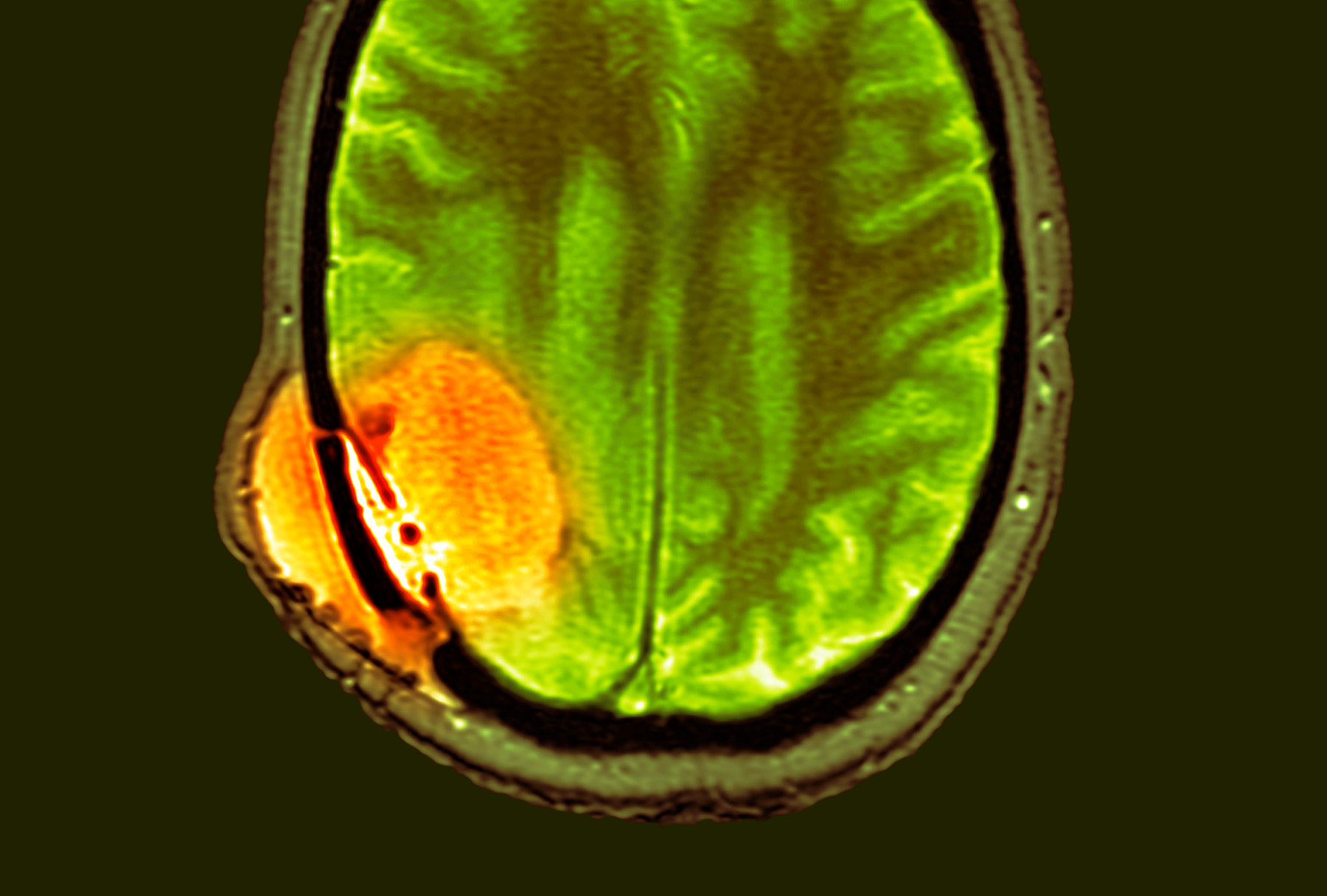
It’s a compelling reason, but just as important for Kawaguchi is delivering ‘health equality’. The trial, he assures, is accessible to all with a total of six sites planned across Australia.
“If you qualify with your oncologist, regardless of what your income level is, it’s open for whoever qualifies,” he says. “For me, that’s what’s important.”
While the Cure Brain Cancer Foundation doesn’t oversee the qualification process, it funds the infrastructure and also the first three initial treatments. The first site will open its doors by the end of this year.
“It’s not blue sky, it’s actually here now,” he says.
The hard work is far from over, however.
“This is a very innovative platform, but it’s only as good as the drugs coming into the pipeline,” Kawaguchi stresses.
That means constant investment is necessary to keep powering the research required for innovative new treatments, and so the Cure Brain Cancer Foundation cannot afford to take its foot off the fundraising pedal.
“The importance of continuing to fundraise is not only for the infrastructure or the first three drugs,” he says. “We want to fund the fourth, the fifth, the sixth, the seventh, but that takes money.
“Oftentimes, people get fixated on the fact that, oh, you paid A$8 million [US$5.1 million] per infrastructure, it’s done. But this is not static. This is a dynamic protocol where the more we can get into the pipeline, the more treatments we can get into Australia. But that takes funding.”
To keep a steady stream of funds flowing into the organization, the Cure Brain Cancer Foundation has changed tack, eschewing more traditional methods of obtaining donations in favor of a more dynamic approach.
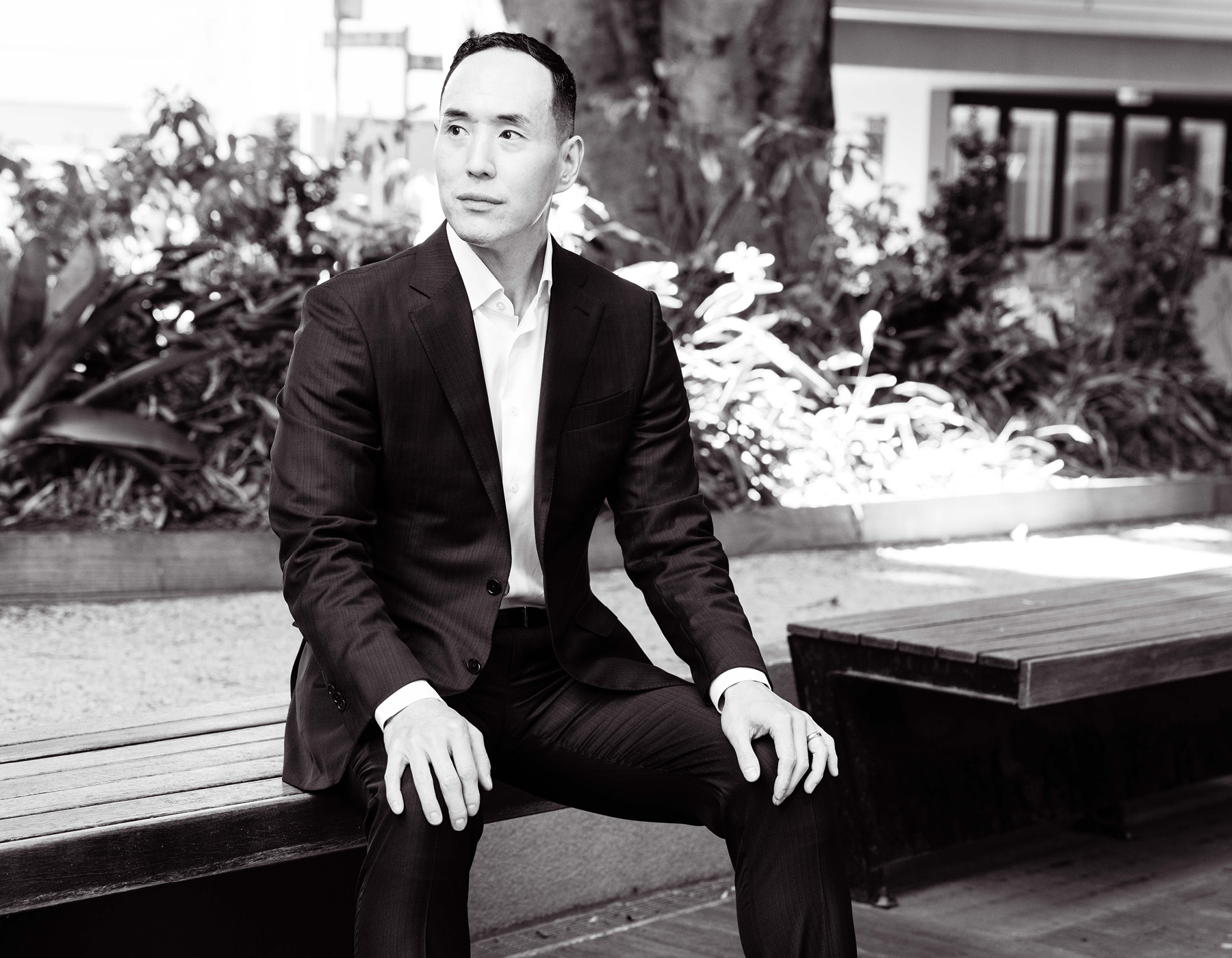
Indeed, it was while in attendance at The CEO Magazine’s Executive of the Year Awards in November 2022 that Kawaguchi came up with perhaps his most off-the-wall fundraising scheme to date.
Listening to the exploits of keynote speaker James Castrission, he was suddenly inspired.
Castrission, an Australian adventurer who, alongside fellow Australian Justin Jones, was part of the first team to ski unsupported from the edge of Antarctica to the South Pole and back. His tale is one of extreme highs and lows.
As his rousing speech drew to a close, Kawaguchi turned to his wife beside him to share his lightbulb moment. “I said, ‘Hey, I haven’t worked out in 30 years, but I think I can do this’. She replied, ‘You’re out of your mind’,” he says with a laugh.
But the seed was sown. In December, he will trek to the South Pole, raising funds in the process, not just for the Cure Brain Cancer Foundation but for 23 other charities across five regions worldwide.
In preparation for the expedition, he is undergoing a grueling training regime with multiple trainers, and has upped his calorie consumption from 1,800 per day to 9,000, gaining around 11 kilograms of muscle in the process.
“Prior to this, I didn’t walk, I didn’t like to exercise, I never went outside,” he admits. “I could not be more outside my comfort zone.
“Every day, I wake up and I think to myself, ‘I’m 48. I hurt. I feel like crap’, but I keep on keeping on. No matter how bad it is, it’s not as bad as when people get cancer.”
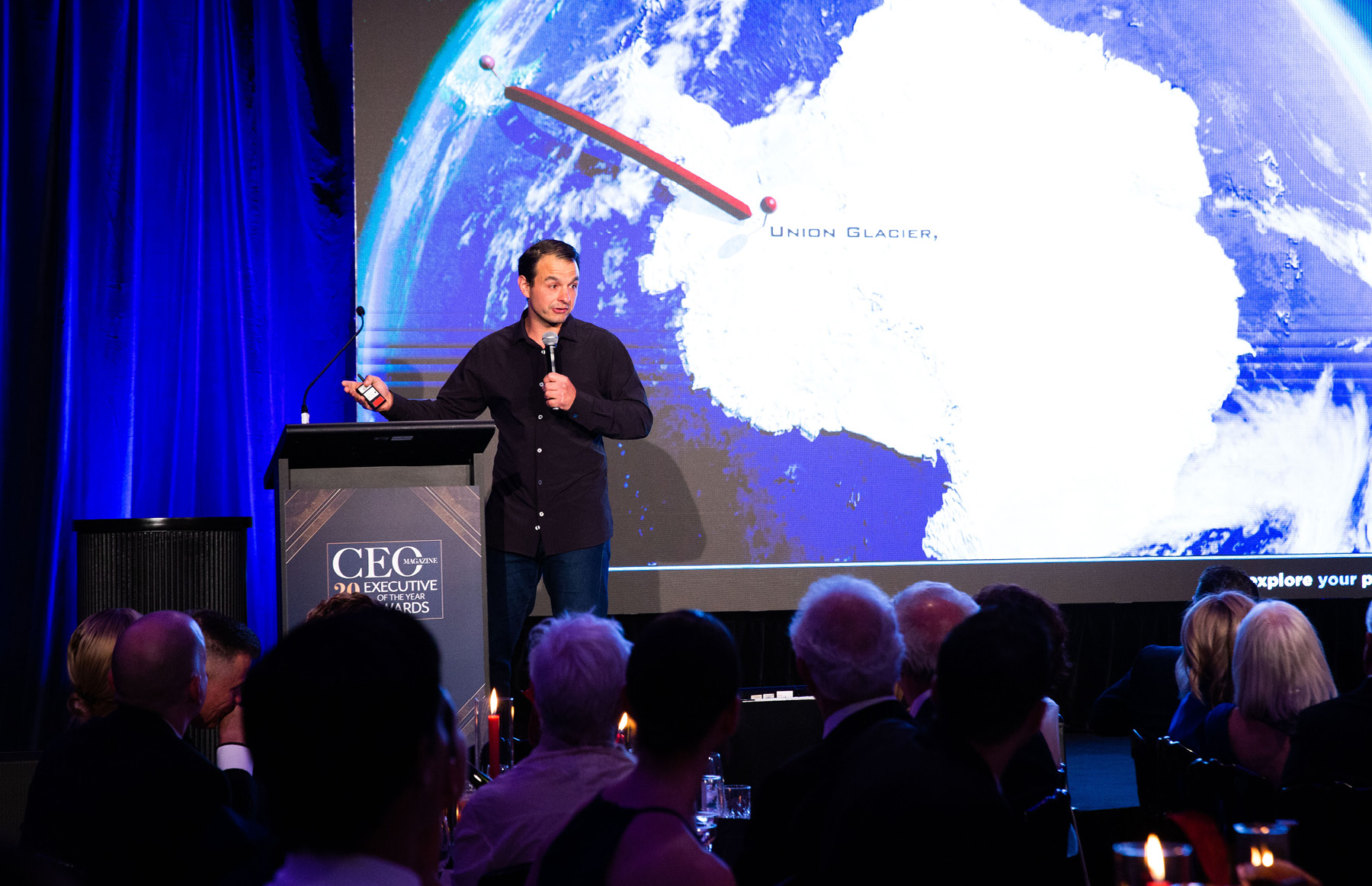
Kawaguchi’s latest fundraising campaign was inspired by adventurer James Castrission who spoke at The CEO Magazine’s Executive of the Year Awards in 2022
Essentially, he explains, he is trying in show that charities don’t necessarily need to operate the same way as they have in the past and that there is no time like the present to embark on a process of change.
“A lot of charities, they always want to make it about themselves. They talk about collaboration, but when it comes to fundraising or events, it’s always about, ‘It’s got to be our way’. I don’t subscribe to that,” he says.
Moving the needle is therefore high on Kawaguchi’s agenda, and he hopes his upcoming South Pole trek will act as a catalyst for change. “Let’s cut the BS out, let’s focus on uplifting everyone, and let’s move in the same direction,” he says.
“Because at the end of the day, why are we here? We’re here for the people with cancer, not for us.”
Kawaguchi credits his investment banking background with his ability to look at things through a different lens.
Coming from the corporate world, for him a return on investment remains king, with efficiency, dynamism and constant evolution all important markers of progress. It’s an approach that has enabled the Cure Brain Cancer Foundation to make swifter progress than its counterparts.
“When I joined, I saw that there was a disconnection between charities, especially cancer charities, and the community they serve,” he explains.
“Everybody I speak with, regardless of whether it’s brain, pancreatic, breast, once you get cancer, you don’t have the luxury of time. You’re trying to look for information. You’re trying to find out, ‘What can we do?’”
But charities tend to lag behind, in his opinion. “They don’t move at the same pace. They’re quite bureaucratic,” he says.
“Before I joined Cure Brain Cancer Foundation, I was looking at some of the other charities and they were saying, ‘Lance, you’re the number one candidate, but the board thinks that you’re going to make changes too quickly.’”
Rather than seeing this as a good thing, they explained to him that they feared his nimble approach would disrupt the culture.
However, within his first month at the Cure Brain Cancer Foundation, he established a scientific advisory committee with the best minds, with members from universities in the United States and Australia.
“If you only have a five percent chance of living past five years, that’s not a good prognosis,” he says. “We have got to move quicker.”
While small with only 12 staff members, the Cure Brain Cancer Foundation team has been structured with this agility in mind. “We all work just as hard. There’s no hierarchy. There’s no delegation,” Kawaguchi says.
“In two-and-a-half years, I have not taken a day off. I work every weekend. I speak to Uber drivers, I speak to everyone saying, ‘Hey, can you give to brain cancer? Did you know it’s the number one killer of children?’
“I think people need to lead by example, and you don’t need a lot of people to make a big difference.”
But things are changing. Kawaguchi now sits on the boards of five other organizations, showing that there is a will to work differently and faster within the sector.
By encouraging collaboration, he also hopes to engender change, better serving the GBM community in the process.
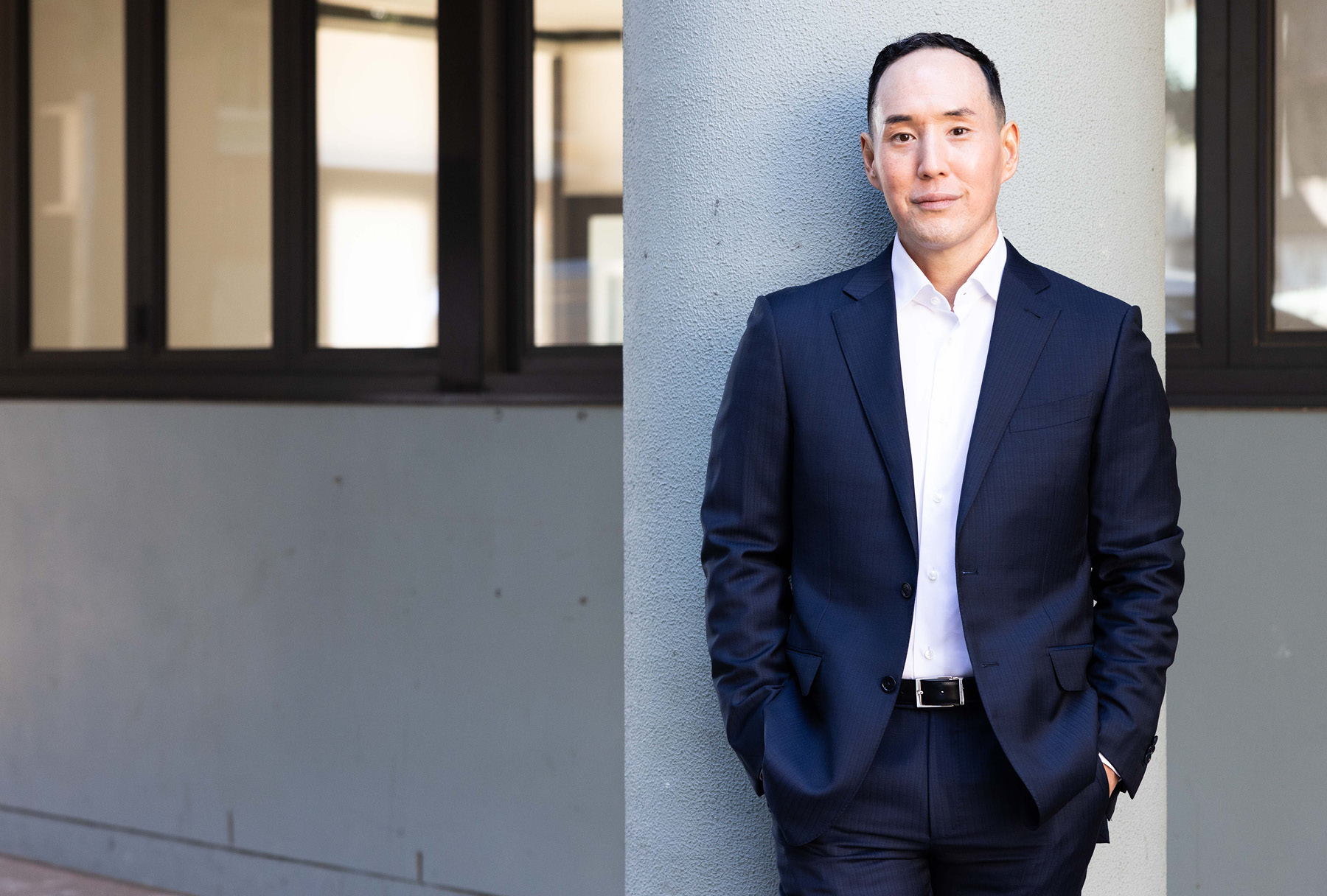
Indeed, it is only through collaboration that GBM AGILE has become a reality in Australia, with Kawaguchi working closely not only with GCAR but with researchers across Australia to get them on board.
Getting buy-in was just one of the challenges he faced along the way to making the GBM AGILE trial a reality.
“I know it has been spoken about 20, 30 times in the past. I can’t control the past. What I can promise you is that I will do everything possible to deliver in the future,” he says.
“For me, the toughest part was really trying to convince GBM AGILE, all the stakeholders, that this is real. We’re going to get it done together. But at the end of the day, I think people really respect results.”
The next big hurdle was structuring the deal, and then raising the hefty sum required for the funding.
“You always have to make sure you try to set clear timelines and have clear milestones. Because one of the things that I find is that these projects don’t progress because people talk a lot, but they don’t hit milestones. Once you miss the first one, you’re already behind the eight ball. You’ve got to just stay on top of that.”
Data is another key area of focus, with Kawaguchi highlighting it as crucial in the fight against GBM. But it’s an area that is often overlooked in Australia.
“With cancer specifically, you always have biomarkers, so you try to figure out ways to identify what treatments work for what person,” he explains.

The launch of the GBM AGILE Trial in Australia is a major milestone for Australian GBM patients and their families
“But when I moved here, I noticed that in each state, the information of medical records is not necessarily shared in a central repository in Australia, which I found because, for example, I had a community member in Melbourne, they had a physician in Brisbane, but they didn’t have access to the information,” he says.
With better sharing of this information, faster progress will be possible, in Kawaguchi’s opinion. “I think the most important thing about cancer is data, especially with big data and AI,” he says.
“The great thing here is that the same protocol that’s happening here in Australia also happens in the United States, Canada and Asia. And all that information is consolidated and is being looked at for trends.
“It’s everyone coming together, collaborating to try find a way to get in front of GBM.”
Among the plans, besides the focus on fundraising and GBM AGILE, are initiatives to better support the researchers doing the hard graft in terms of finding new treatments.
“In Australia, typically when you give a fellowship, it’s a one-year fellowship. But what we do is we give three-year fellowships, because researchers have three jobs,” Kawaguchi explains.
“They’ve got to do research, then every year, they’ve got to write grants to get funding for research, and then they have to do fundraising for the institution.”
This year, the Cure Brain Cancer Foundation funded two early-career fellowships of around US$221,000 each, which takes the pressure of writing grants out of the equation. “They can just focus on doing what they do best, which is research,” he says.
Last year, the organization launched its first-ever mid-career fellowship, designed to address the loss of many researchers, mostly women, to the industry at around the eight-year mark after obtaining their PhDs.
Statistics show that only 3.5 percent of mid-career researchers, between six and 15 years post-PhD, will continue their career in research.
The inaugural US$269,000 stipend was awarded to Melbourne researcher Hsiao Voon, who is working to adapt a successful leukemia treatment for use in pediatric brain cancers. “That gives her three years to just focus on staying in brain cancer research,” Kawaguchi says.
Early-stage biotechs are another area of focus. “Here, there’s not a really big venture capital type of ecosystem for early-stage biotechs,” Kawaguchi points out.
“The choices that biotechs in Australia have is that they can either do an initial public offering to the ASX, or they can go through venture capital, which is really not the best because they have to give up at least 40 or 50 percent of their equity.”

To address this, in 2022 the Cure Brain Cancer Foundation launched its first ever US$1.29 million brain cancer accelerator – the world’s largest to date – for ‘phase-zero’ brain cancer Australian biotechs.
“We had a winner in Melbourne and they’re using the money to progress a vaccine,” he says.
The Telethon Kids Institute, part of therapeutic antibody development company Patrys, was awarded around US$160,000 in funding to support research on potential therapeutic applications for Patrys’ PAT-DX1 and PAT-DX3 deoxymabs in the treatment and management of brain cancers.
By supporting Australian biotechs such as this, the Cure Brain Cancer Foundation hopes to help them progress their treatments without having to leave Australia.
Meanwhile, the Foundation continues its superlative work in supporting people who have brain cancer. This year alone, the organization has invested around US$416,000 in the Peace of Mind Foundation, which offers disability and support services.
Peace of Mind’s National Advocacy Service provides brain cancer patients and their carers with practical support to access government assistance, funding and support services.
“It’s so difficult to figure out. Oftentimes, by the time people go through the process, the loved one has passed,” Kawaguchi says.
“We’ve invested quite a bit of money over the past two years and as of about a month ago, we’ve unlocked A$50 million [US$32 million] worth of NDIS [National Disability Insurance Scheme] benefits for over 850 Australian brain cancer families.”
With access to the world’s best treatments for GBM now available in Australia, while there are no guarantees, it represents a proactive step forward.
“That’s the hope component,” Kawaguchi says. “Especially in today’s world, there’s so much negativity so I think hope is the most important thing.”
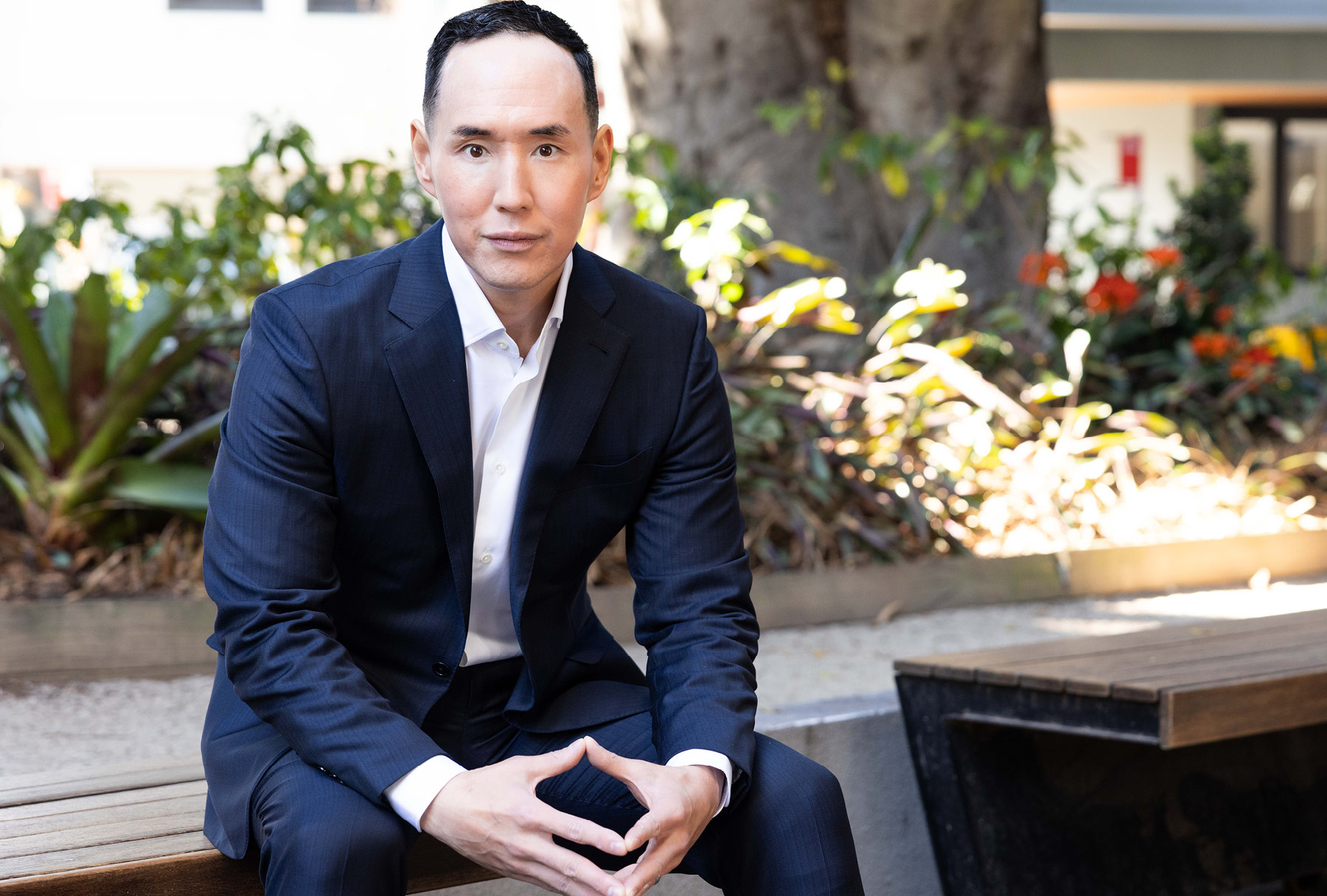
It’s a subject he knows only too well, with his own mother having died from cancer.
“She was given three months, but she had hope because she said, ‘Lance, I want to make it to five months because I want to get to your dad’s and my 47th wedding anniversary,’” he recalls.
“She made it to the wedding anniversary and we celebrated as a family. That’s what I want to give people – hope. Because up until now, it’s pretty much, ‘get your affairs in order, say goodbye’. To me, that’s unacceptable. It’s 2023.”
He points to the lessons learned during the COVID-19 pandemic as markers of what can be achieved with proper funding and global coordination.
“Even if it’s not going to work, at least it gives you hope that you’re doing something to actually battle it, instead of just sitting back and just being like, ‘OK, cool’. For me, it’s just about that, reinforcing the positivity,” he says.
The ripple effect of hope is already underway with Kawaguchi sharing the excitement that is palpable throughout the GBM community.
“They’re beyond exuberant,” he says, adding that community events at the opening of each site are planned to celebrate this major milestone.
He believes it’s his connection with the brain cancer community that has helped him achieve so much in so little time, particularly coming from an entirely different background.
“I think we over-complicate things once we get our own biases, our own bureaucracies coming in. I keep it simple. I speak to the community, they tell me what they want. I try to make sure that we have the proper protocols and processes in place and we execute it,” he says.
“At the end of the day, I think we’re just essentially here as a utility for people with cancer. It’s what they need. It’s where we have to fill that gap. We don’t have any galas or balls. We don’t have anything with fluff. It’s just execution. Net results.
“I try to cut out the negativity and focus on the community. That’s all I care about.”